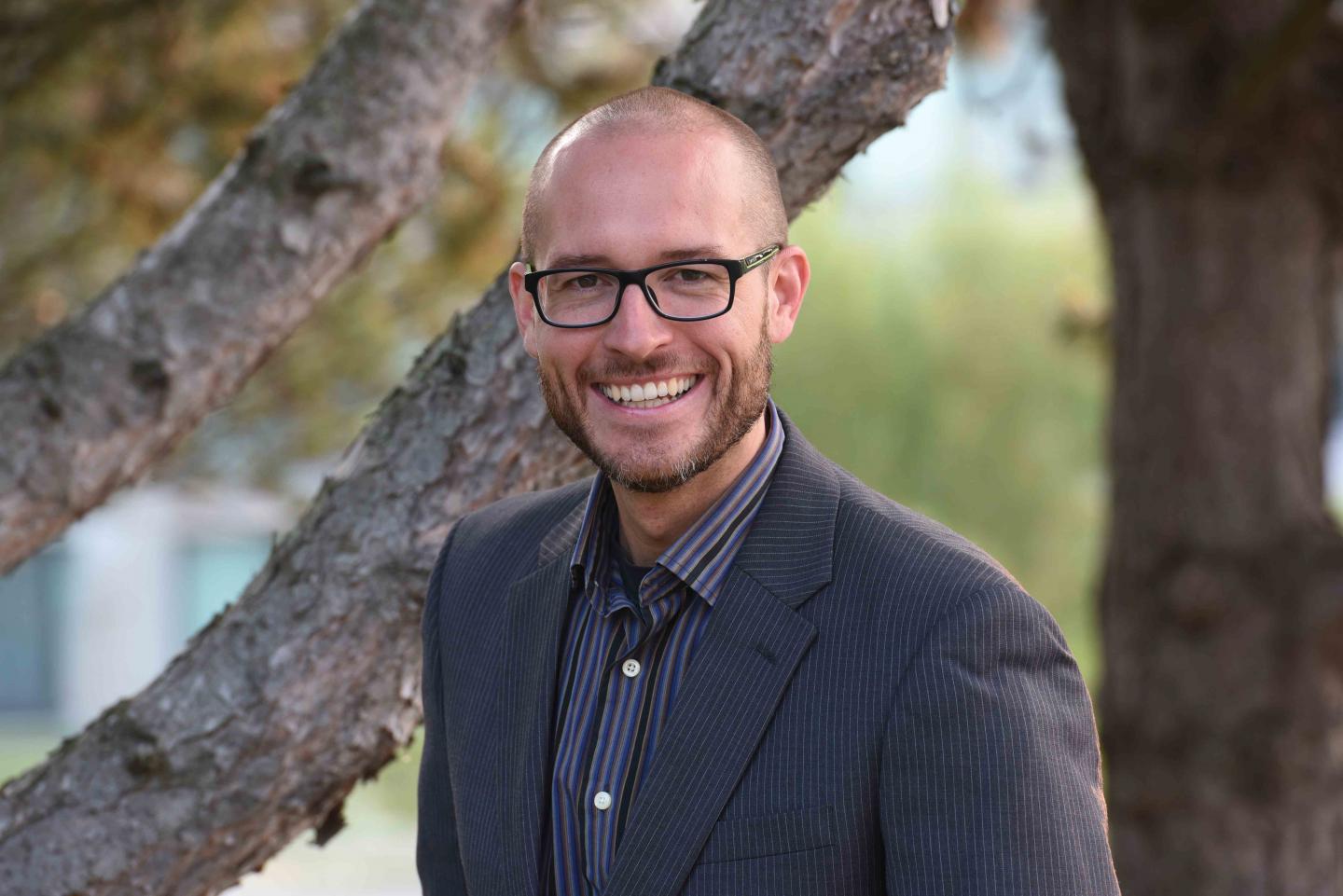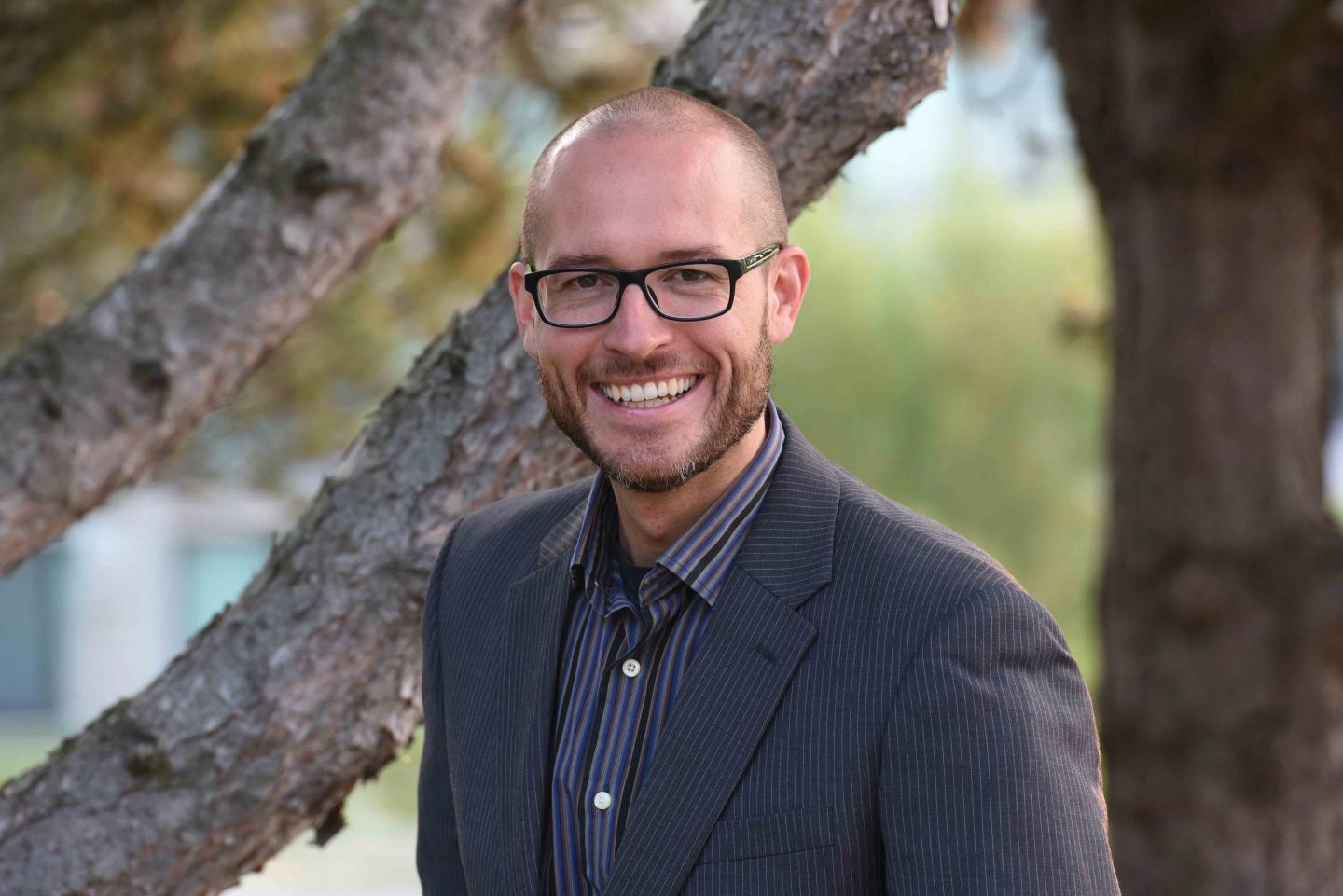
Credit: CIFAR.
RIVERSIDE, Calif. — When two atomically thin two-dimensional layers are stacked on top of each other and one layer is made to rotate against the second layer, they begin to produce patterns — the familiar moiré patterns — that neither layer can generate on its own and that facilitate the passage of light and electrons, allowing for materials that exhibit unusual phenomena. For example, when two graphene layers are overlaid and the angle between them is 1.1 degrees, the material becomes a superconductor.
"It's a bit like driving past a vineyard and looking out the window at the vineyard rows. Every now and then, you see no rows because you're looking directly along a row," said Nathaniel Gabor, an associate professor in the Department of Physics and Astronomy at the University of California, Riverside. "This is akin to what happens when two atomic layers are stacked on top of each other. At certain angles of twist, everything is energetically allowed. It adds up just right to allow for interesting possibilities of energy transfer."
This is the future of new materials being synthesized by twisting and stacking atomically thin layers, and is still in the "alchemy" stage, Gabor added. To bring it all under one roof, he and physicist Justin C. W. Song of Nanyang Technological University, Singapore, have proposed this field of research be called "electron quantum metamaterials" and have just published a perspective article in Nature Nanotechnology.
"We highlight the potential of engineering synthetic periodic arrays with feature sizes below the wavelength of an electron. Such engineering allows the electrons to be manipulated in unusual ways, resulting in a new range of synthetic quantum metamaterials with unconventional responses," Gabor said.
Metamaterials are a class of material engineered to produce properties that do not occur naturally. Examples include optical cloaking devices and super-lenses akin to the Fresnel lens that lighthouses use. Nature, too, has adopted such techniques – for example, in the unique coloring of butterfly wings – to manipulate photons as they move through nanoscale structures.
"Unlike photons that scarcely interact with each other, however, electrons in subwavelength structured metamaterials are charged, and they strongly interact," Gabor said. "The result is an enormous variety of emergent phenomena and radically new classes of interacting quantum metamaterials."
Gabor and Song were invited by Nature Nanotechnology to write a review paper. But the pair chose to delve deeper and lay out the fundamental physics that may explain much of the research in electron quantum metamaterials. They wrote a perspective paper instead that envisions the current status of the field and discusses its future.
"Researchers, including in our own labs, were exploring a variety of metamaterials but no one had given the field even a name," said Gabor, who directs the Quantum Materials Optoelectronics lab at UCR. "That was our intent in writing the perspective. We are the first to codify the underlying physics. In a way, we are expressing the periodic table of this new and exciting field. It has been a herculean task to codify all the work that has been done so far and to present a unifying picture. The ideas and experiments have matured, and the literature shows there has been rapid progress in creating quantum materials for electrons. It was time to rein it all in under one umbrella and offer a roadmap to researchers for categorizing future work."
In the perspective, Gabor and Song collect early examples in electron metamaterials and distil emerging design strategies for electronic control from them. They write that one of the most promising aspects of the new field occurs when electrons in subwavelength-structure samples interact to exhibit unexpected emergent behavior.
"The behavior of superconductivity in twisted bilayer graphene that emerged was a surprise," Gabor said. "It shows, remarkably, how electron interactions and subwavelength features could be made to work together in quantum metamaterials to produce radically new phenomena. It is examples like this that paint an exciting future for electronic metamaterials. Thus far, we have only set the stage for a lot of new work to come."
Gabor, a recipient of a Cottrell Scholar Award and a Canadian Institute for Advanced Research Azrieli Global Scholar Award, was supported by the Air Force Office of Scientific Research Young Investigator Program and a National Science Foundation Division of Materials Research CAREER award.
###
The University of California, Riverside is a doctoral research university, a living laboratory for groundbreaking exploration of issues critical to Inland Southern California, the state and communities around the world. Reflecting California's diverse culture, UCR's enrollment is now nearly 23,000 students. The campus opened a medical school in 2013 and has reached the heart of the Coachella Valley by way of the UCR Palm Desert Center. The campus has an annual statewide economic impact of more than $1 billion. To learn more, call (951) UCR-NEWS.
Media Contact
Iqbal Pittalwala
[email protected]
951-827-6050
@UCRiverside
http://www.ucr.edu





